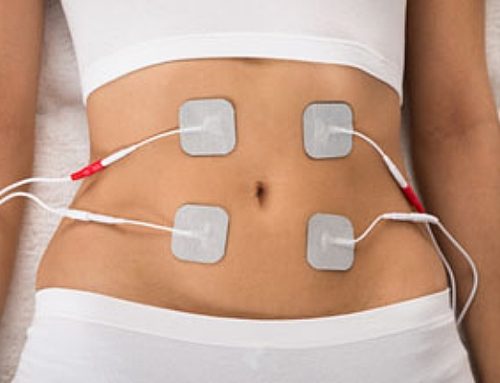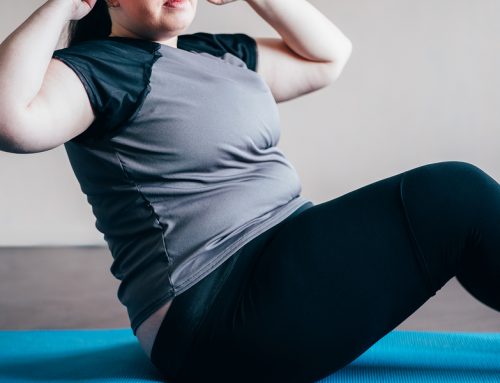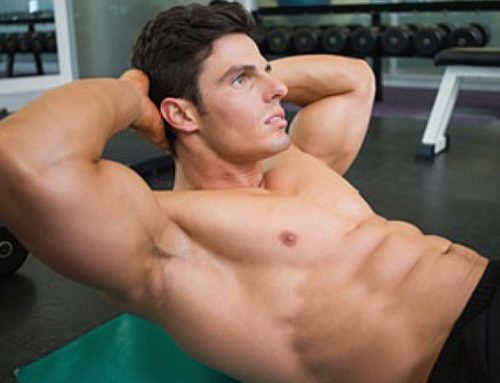If you search online or watch people in the gym, you’ll hear all kinds of different opinions and see all kinds of different practices with regards to ab training, mainly because so many people believe the abs are somehow different than other muscles. Some people believe the abs should be trained just like any other body part. But many believe the abs can handle more frequent training, such as every other day. And you’ll always bump into people in the fitness industry who recommend training the abs almost every day.
 Ab training frequency is one of those debates that may not ever end, and part of it simply has to do with different personal preferences and different goals.However, the science of resistance training has advanced to the point where we’ve got some good best practices that the majority of people can follow with confidence.
Ab training frequency is one of those debates that may not ever end, and part of it simply has to do with different personal preferences and different goals.However, the science of resistance training has advanced to the point where we’ve got some good best practices that the majority of people can follow with confidence.
Is abdominal muscle tissue really different?
First of all, it’s a myth that the abdominal muscles are completely different than other muscles in your body (making ultra high reps or high training frequency necessary). Granted, the various muscles in your body may have minor differences in fiber type and the distribution of fiber type may also be influenced by genetics, but in terms of muscle cell structure, physiology and function, the abdominals are very much like other skeletal muscles.
This suggests that you should work your abs with similar training variables including the weight, sets reps, and the frequency as you would your arms, legs, back, deltoids, and so on. Many people prefer slightly higher reps for abs, but the abs respond to heavier loads and moderate reps as well, and differences in program design should have more to do with differences in personal goals than in muscle fibers.
Abdominal training and muscle recovery
The abs also have similar needs for recovery in between workouts. After intense resistance training, muscle tissue is broken down (microscopic tears and inflammation, etc) and it takes time to rebuild and recover from that training stress.
Allowing for muscle recovery is one of the reasons the abs should typically be trained with the same frequency as any other body part. That’s usually about 2 times per week, give or take a little, though there may be exceptions.
When someone wants to prioritize a body part that’s lagging or simply wants to build a body part to the maximum, one way to do that is to train it more often. Still, even during priority training phases, every muscle requires a certain amount of recovery time which is usually at least 48 hours. That’s why 3 times per week or every other day at most, is the highest frequency you typically see for resistance training, and that should go for for the abdominals as well.
More reasons training abs every day is not necessary, even when it’s possible
When it comes to non-resistance exercises, which may include body weight exercises and calisthenics, along with low to moderate intensity cardio, it’s often possible to do them daily and your body is able to recover. That’s because most body weight only resistance exercises don’t break down muscle tissue to the degree it does when you train with heavier weights and higher intensity. This is why you may occasionally see people – many who appear highly fit and look great – who do sit ups, push ups and so on, almost every day.
Most experts agree, and I concur, that training abs every day is unnecessary at least in the sense that there’s a diminishing return from the additional time and effort spent beyond 2 ab workouts a week. When you’re prioritizing ab training, you might bump the frequency to 3 days per week, but any additional benefit from more frequent training is likely to be so minimal that from a practicality viewpoint we could even argue it’s time wasted.
Unless you’re very sure about your abilities, you also have the question looming over your head of whether you are over-training and the muscles are not recovering, or whether you will start to incur overuse injuries.
You may read about a fitness model training abs every day or see a Navy seal on You Tube doing sit ups, push ups and pullups every day, for hundreds of reps, but that doesn’t mean everyone else should, or needs to. Remember that recovery ability may vary from one person to the next based on genetics, training experience, conditioning level, and skill level, among other factors.
The effect of “indirect” ab training
Here’s something else to consider: If you’re doing full body weight training, you might already be working your abs more than you think. The muscles of your core and midsection contract when you’re doing exercises that aren’t direct ab exercises.
Front squats, deadlifts, overhead presses, pullups and rows all create a strong isometric or “bracing” contraction of your abs and core. You may even hear people say their abs were sore the day after doing heavy pushdowns (a tricep exercise) or straight arm pulldowns (a lat exercise).
It’s not unheard of for someone to have great ab muscle development (visible six pack) without ever training their abs directly (with exercises like crunches, planks, etc). Their abs were getting worked indirectly during other exercises, and they also simply had low body fat levels.
The best way to see your abs is… reduce your body fat!
When you see someone with great, well-defined abs, it means they’ve achieved low body fat, it doesn’t necessarily mean their ab training routine is ideal. The ideal ab training frequency and the ideal method of fat loss are not the same thing.
That brings us to the final point…
Many people with fat loss goals train their abs more often and with more volume under the misguided idea that more ab training will burn more fat off the area and you will see your abdominal definition faster. This is false.
Spot reduction is a myth. When you’re in a calorie deficit, you draw fat throughout your entire body and wherever you put it on first you will tend to lose it last (F.O.L.O. = first on, last off). Ironically, abdominal fat can be the last fat to go.
Abdominal training will strengthen and condition the ab muscles but won’t burn fat off the abdominal area to any significant degree. Fat is lost with caloric deficit and the number one way to achieve that is diet (stricter compliance to a calorie deficit, and consistency over time, which most people lack), and secondarily with more cardio or high-calorie burning activity.
If your abs get worked during heavy compound exercises, what about skipping ab training completely?
Some people ask, “If your abs and core are worked when you do basic barbell exercises like overhead presses, front squats and so on, isn’t it possible to achieve great looking abs without any direct ab training just by working really heard and heavy on those compound movements?”
I see this in a similar way as I do the argument that “if you do compound barbell movements, then you don’t need to train your biceps and triceps directly because your triceps get worked indirectly during presses (shoulder and chest) and your biceps are worked indirectly during pulling movements like rows and especially chin ups.”
That may be true, but what I’ve discovered is that without direct training, a muscle is unlikely to be built to the maximum.
Without directly working the abs, like the arms, you’re almost certainly leaving growth on the table, especially if you’re not genetically gifted in that area.
If you’re 100% happy with the way a body part looks, you could argue for minimalist training or no training at all, at least for cosmetic reasons. For example, I know people genetically gifted folks with ridiculous huge calves, so they simply don’t work them. But also consider, especially in the case of the abs, that most people also train for strength and athletic ability or at least general fitness and function. Strong muscles that are kept in balance with the rest of the body can also help prevent injury.
It pays then to include at least a minimum of direct ab training, even if you’re not a big fan of ab workouts. For whatever it’s worth, I never enjoyed ab training, and I confess slacking off at multiple times in my life, but that gave me an opportunity to see the difference.
I was blessed with pretty decent ab genetics, so when I was lean enough, my abs still looked pretty good even when I didn’t work them at all. When I trained them directly however, they looked better by a large order of magnitude. I ultimately found that even only one ab workout a week helped me maintain strength in my abs as well as a good six-pack, but I don’t recommend skipping abs completely.
In conclusion, here are the key points to remember about ab training frequency:
1. The best practice is to train your abs like any other body part – usually 2 times per week. Try that first and if it works well, stick with it. If you want to prioritize abs and experiment, try a third workout each week and see how you respond.
2. Training abs every day is not necessary. Just because some people do it doesn’t mean it’s the scientifically supported best practice.
3. If you wouldn’t train your chest or biceps every day, they why would you train your abs every day?
4. The number one way to see your abs is not extra ab workouts, it’s losing body fat with an effective fat-burning nutrition program. You could already have a great set of abs, but if they are covered up with a layer of body fat, you’re not going to see them until you diet the fat off.
– Tom Venuto,
Author of Burn The Fat, Feed the Muscle.
Founder & CEO, Burn The Fat Inner Circle
P.S. The old cliche, “Abs are made in the kitchen” bears a lot of truth. You must get your diet in order to have any hope of ever seeing abdominal definition. If you haven’t read Burn The Fat, Feed the Muscle. it’s been the definitive guide to fat burning nutrition for a decade and a half, and it could be the key to finally uncovering your six pack. This classic has been updated, revised and also released in audiobook format on audible, via amazon: http://amzn.to/2AkNvqy

Tom Venuto is a lifetime natural (steroid-free) bodybuilder, fitness writer and author of Burn The Fat, Feed The Muscle: Fat Burning Secrets of Bodybuilders and Fitness Models and the national bestseller, The Body Fat Solution, which was an Oprah Magazine and Men’s Fitness Magazine pick. Tom has appeared in The New York Times, Wall Street Journal, Huffington Post, Oprah Magazine, Muscle and Fitness Magazine, Ironman Magazine and Men’s Fitness Magazine, as well as on dozens of radio shows including Sirius Satellite Radio, ESPN-1250 and WCBS. Tom is also the founder and CEO of Burn The Fat Inner Circle – a fitness support community for inspiration and transformation
Best core stability exercises: Cable Machine Paloff Press
Best abdominal (spinal flexion) exercises





I know… All these folks in the gym who just came in to “slim” for the summer, doing 500 crunches at once and then not showing up till next week…
I know you’ll tell me I am wrong but I think spot reduction works for me after I drop first few pounds. I prob. do abs only once a week, as I dont’ want them to be bulging on me too much as on a guy, but I’ve noticed when I work on them more towards maybe the middle of a cutting cycle, they do seem to draw more from their subcutaneous fat than from my face. Same I noticed with hamstrings and glutes after frequent glute bridges (not squats or lunges)
Maybe it’s an illusion and it’s just me being grumpy and unclear in the head on low carbs :)